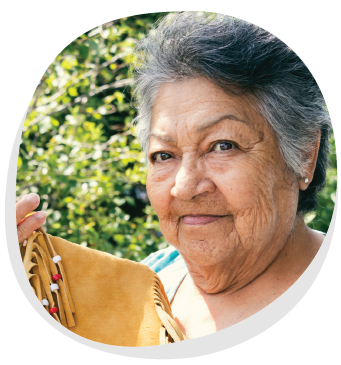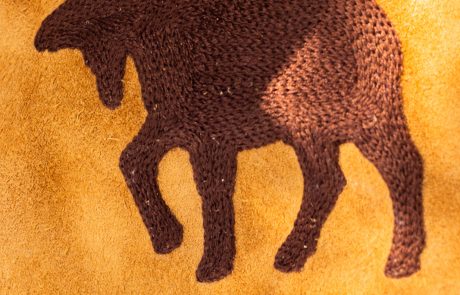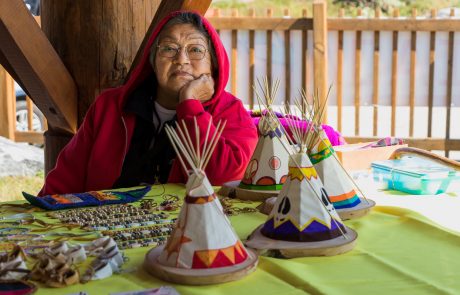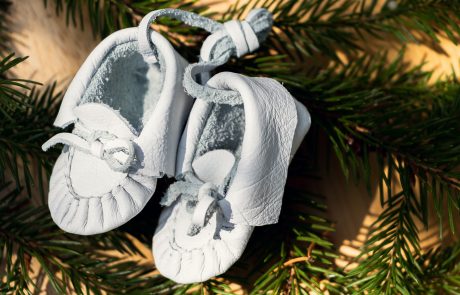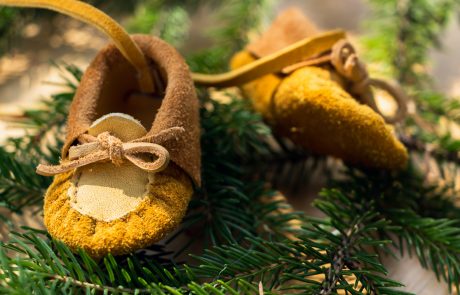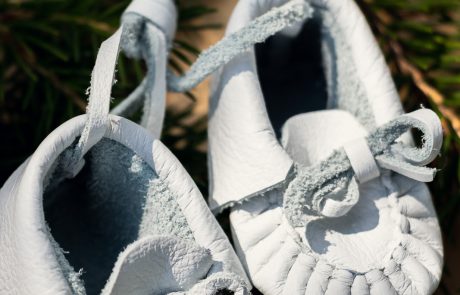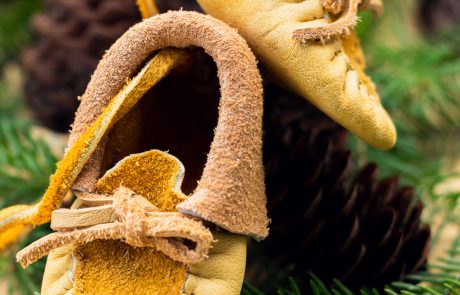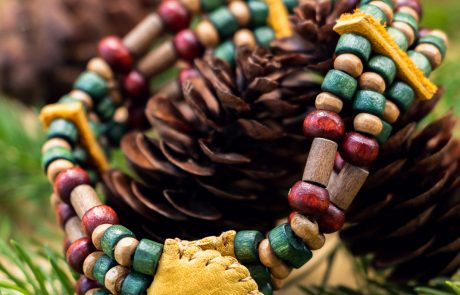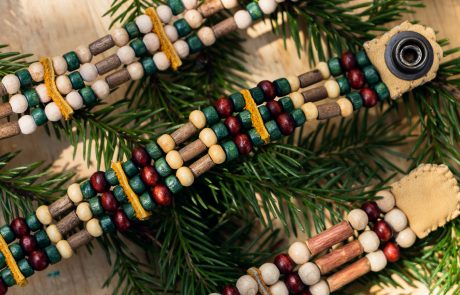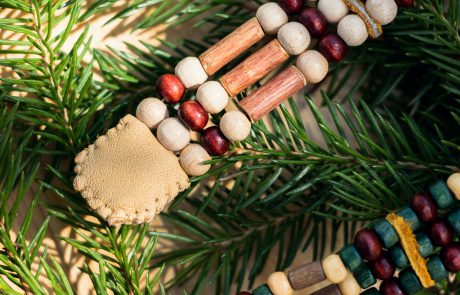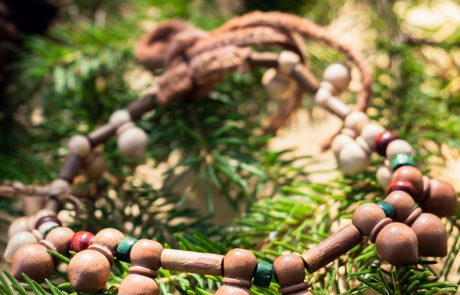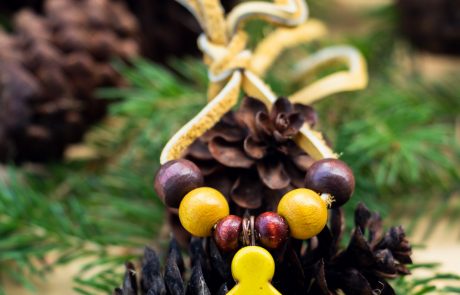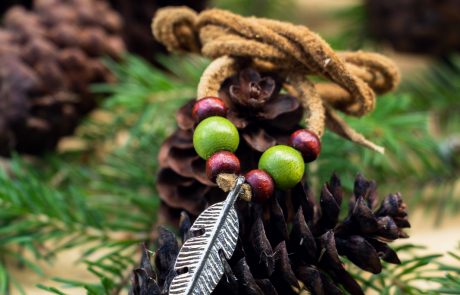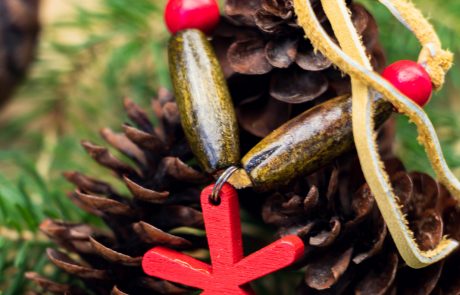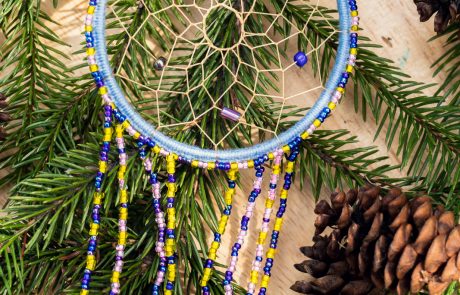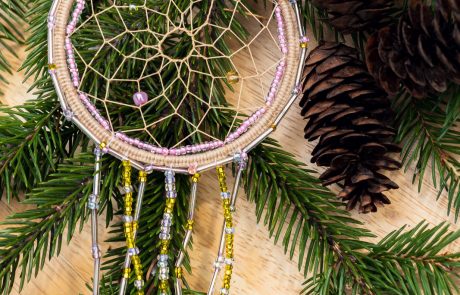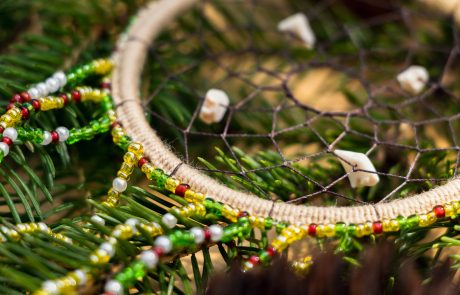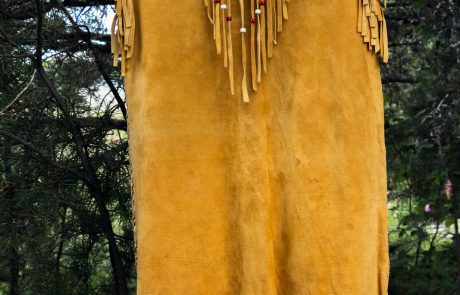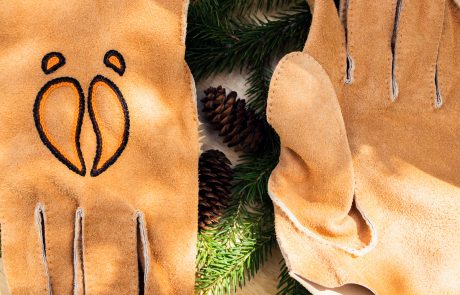Molly Mowatt
Molly Mowatt is a skilled craftswoman and master seamstress, as well as a legend teller and dedicated educator. She is from the Abitibiwinni Anicinabe community of Pikogan and has made the transmission of her language and culture a mission in life and devoted her career to it. Today, Molly is sharing her creativity and know-how and producing “masterpieces” rooted in Anicinabe values in her surroundings, spreading Anicinabe wisdom through her stories in schools and homes and sharing her experience with the next generation of teachers at the Migwan School, of which she is the instigator.
« My greatest pride is to have persevered, to see that people believed that it was possible for us to manage our education; to believe that we, the Indigenous people, could have something beautiful on our own and that our children would be with us. That’s kind of how I act with myself in my creation: I allow my potential to emerge. I let my imagination go and calmly, I meditate. I ask myself the question: ‘How can I do this? The answers come by themselves, because it is in calmness that I am able to do beautiful things. »
Si les bijoux, capteurs de rêves, mitaines et mocassins de Molly voyagent partout, dans les Pow wow et autres évènements, c’est que le reste de son travail est généralement vendu avant même d’être achevé. L’artisane confectionne ses mitaines et mocassins à la main, mais leurs coutures impeccables pourraient aisément être confondues avec le travail d’une machine à coudre. On peut reconnaître ses pièces aux broderies d’une grande finesse qu’ils arborent et dont la durabilité n’a pas d’égal. Molly confectionne également des régalias pour hommes et femmes et ses œuvres ont déjà reçu des prix.
Molly takes great pride in the quality of her craftsmanship, but what gives her the greatest satisfaction is bringing materials back to life: in her hands, bracelets purchased at the thrift decorate dream catchers; an old-fashioned coat becomes mitts that warm the hands of the whole family; the bones of a fish shared at her table become jewellery. For her, the choice of material gives a lot of value to the objects and collecting them is therefore at the heart of her creative process.
« Some objects have a beauty in them. Make them a masterpiece! That’s what I do. I bring these objects back to life so that they become new works of art. This is called transformation. »
For Molly, an artisan is a person who can combine vision with a set of manual skills. Her inspiration comes from nature, but also from those elements that occur on her path and “speak to her”. Like her ancestors, she doesn’t hesitate to innovate in order to enhance these precious materials and prioritizes experimentation. Molly is proficient in a wide range of techniques, both ancient and modern. In addition to the experience she learned from her mother and the other artisans in her community, she completed a four-year training program in haute couture cutting and tailoring in Amos.
« I learned by watching. I was a very, very curious person. I was eager to learn. It was by looking at the craftswomen that I came to know how I was going to do my creations. The improvement I sought with the cutting and tailoring class sharpened the talent I had. »
Craftsmanship, according to her, is a way of teaching oneself the right to make mistakes: a craftsperson calmly seeks solutions to obstacles and this ability is transferable to all spheres of life. As she explains, this is one of the most important lessons of indigenous philosophy: education must be done gently and positively reinforcing, never denigrating.
« I know that everyone makes experiences, good and bad, but if you want to nurture a child, don’t say negative things to him. Let him see how he could have avoided a mistake. If you don’t, you’re going to crush him, hurt him, mark him for life. »
After going through difficult experiences herself during her seven years of schooling at the Indian residential school, Molly chose to dedicate her life to establishing a school in her community so that the children of Pikogan would not have to go through what she had gone through. “We didn’t feel valued, she says. Schooling took place in the constant insecurity of the young child.” Upon graduating from her teaching studies in Sherbrooke, the fulfillment of a childhood dream, she was determined to make a difference. She phoned the parish priest of her community and asked his permission to establish a preschool class in the church basement in Pikogan. She then wrote to the school board and obtained their permission. Pikogan saw the birth of its first class in 1968 as a result of this initiative. She taught for the school board until 1980. She and the Chief of Pikogan then teamed up with the Université du Québec in Chicoutimi to design a training program specifically for Indigenous teachers. That year, Molly supervised the first cohort of the Indigenous Teacher Training Program and the Migwan School became independent from the school board. The school, which then had kindergarten and preschool, opened with a first grade class the following year. Each year a new elementary level was added. In 1987, the school moved to a new facility designed to accommodate all levels of elementary school.
Molly retired from education in 2014 to devote herself entirely to her craft work after 37 years at Migwan School in Pikogan. She still regularly visits the classrooms as a resource person and to tell stories and legends. She enjoys her role as Kokoum Molly because she believes that stories are a great way to reach people, to stimulate their creativity and to inscribe unforgettable lessons of life in their hearts.
« That’s what I’m proud of: that I’ve accomplished something for my community. I don’t tip my hat to myself; I bow down to those who believed in me. »
Her involvement in the field of education and her artistic practice reflect the same desire for self-determination, the same message of courage and self-confidence that she has at heart to transmit to her community and to all Indigenous peoples: “You have something beautiful to bring out, share it with others! You have to believe in your possibilities, believe that you can make beautiful things, no matter how small they may be, even if it’s a tiny mini moccasin… size 000!”
To place an order, contact Molly at 819-727-1241.
Photos: Marie-Raphaëlle leBlond
